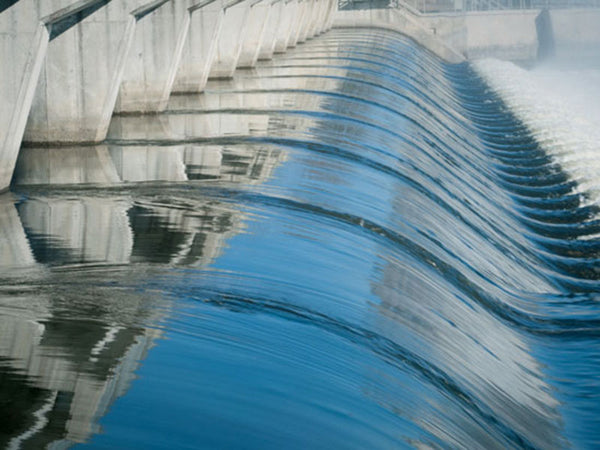
main content:
- 1 Where does water come from
- 2 Hydroelectric power station
- 3 Protect the water tower and green reservoir
Coal, oil, and natural gas are already familiar conventional energy sources, and the utilization of large and medium-sized hydropower stations has long been included in conventional energy sources. The exception is small hydropower stations (commonly known as small hydropower), which are called "new energy sources" together with nuclear, wind, biomass, solar, geothermal, and ocean energy. Obviously, this is an artificial division. In fact, whether large or medium-sized hydropower stations, small hydropower stations, and other ways of using hydropower can be discussed together.
1 Where does water come from

The water that exists naturally on land, including rivers, lakes, swamps, and snow-covered glaciers on the mountains, is almost fresh water. It is the water vapor evaporated from the sea water after being heated by the sun and blown over the land by the sea breeze. When it is condensed, it becomes rain and snow. Falling and accumulating. The formation process of water on land is similar to the process of making distilled water in a laboratory. In his poem "Jiang Jinjiu", the poet Li Bai of the Tang dynasty said that the water of the Yellow River came from the sky and rushed to the sea without returning. This is a vivid portrayal of the source of water on land and the process of water energy formation. The reason why water rushes is because water at a high place has potential energy. This is a form of energy. Water is a liquid substance that flows. When it flows to a low place, the potential energy is gradually released and transformed into kinetic energy. The energy that people can use. The process of water formation on land is a perennial cycle. Where there is more water and less water, there are also natural laws. Therefore, the energy stored in water is renewable, and the amount of water stored is relatively stable.
Schematic diagram of rainfall process
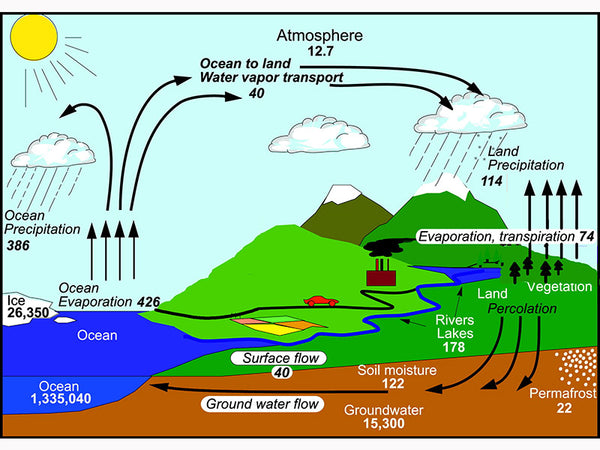
How much water can there be in the world? When we talk about hydropower resources, we can measure power in units of watts (W), kilowatts (kW), or megawatts (MW). According to relevant survey estimates, the theoretical reserves of hydropower resources in the world are estimated to be 5.5 million megawatts, or 5.5 billion kilowatts, on average throughout the year. Among them, Asia accounts for about 34%, Africa accounts for 21%, Europe 17%, North America 13%, Latin America 12%, and Oceania 3%. Not all theoretical reserves can be developed and utilized. First, they are restricted by technology and economy, and secondly, they are restricted by comprehensive utilization of water resources and environmental influence factors. For example, the topography, geological conditions, and hydrological characteristics are complex, which makes development very difficult, or the construction cost is too high, and the submergence loss is too large. Even if it can be developed technically, it will be abandoned due to economic uneconomical. Waterway navigation, aquaculture, industry and agriculture, and civil water supply all need water resources, not only for hydroelectric power generation, but also for waterlogging and flood control issues that need to be coordinated and dealt with. Water cannot be accumulated solely for power generation. There is also the impact of the ecological environment, and the impact of the inundation of the reservoir on the protection of species must be considered. In this way, the degree of development of hydropower resources has been greatly compressed, which is also inevitable. If we understand the developable hydropower resources at the level of technical and economic rationality, how much hydropower can be developed in the world? Only about 40% of the theoretical reserves! But it's a lot. If fully developed and utilized, the installed capacity can reach 2.2 billion kilowatts, equivalent to the total installed capacity of 120 Three Gorges power stations on the Yangtze River. Based on 4,000 hours of power generation per year, the available electricity is 9 trillion kilowatt-hours, which is equivalent to twice the world's total power generation in 2000, and also equivalent to a quarter of the world's total energy consumption of 12.8 billion tons of standard coal that year.
How many hydropower resources does China have? China has a vast territory, numerous rivers, abundant flow, huge drop, and rich hydropower resources. The theoretical reserves are nearly 700 million kilowatts, which is almost 12% of the world's, and the developable hydropower resources account for more than 15% of the world. Both the theoretical reserves and the exploitable amount of hydropower resources occupy the first place among all countries in the world, which is uniquely endowed by nature. It is estimated that the total installed capacity can reach about 400 million kilowatts, and the degree of development is close to 60%. China's hydropower resources are unevenly distributed. Yunnan, Sichuan, and Tibet in the southwest account for more than half of the country’s hydropower resources. In terms of rivers, hydropower resources are concentrated in the middle and upper reaches of the Yangtze and Yellow Rivers, the middle and lower reaches of the Yarlung Zangbo River, the Pearl River, the Lancang River, the Nu River and the upper reaches of Heilongjiang. Large and medium-sized hydropower stations built on these 7 rivers will account for more than 90% of the large and medium-sized hydropower stations nationwide. As of 2004, China’s total installed hydropower capacity has reached about 100 million kilowatts, accounting for 22.7% of the country’s total installed capacity of various energy power generation. The proportion of hydropower in the total power generation is not small, second only to the United States. Compared with the development of hydropower, the developed rate is still very low, only 25%, slightly higher than the world average of 22%, and far lower than developed countries (65% in the United States, 66% in Japan, 53% in Canada, and Norway). 87%) level. In other words. If all the hydropower that can be developed is developed, the installed capacity of hydropower can be increased by three times compared with 2004, which is equivalent to the level of 400 million kilowatts of total installed power in the country that year. This shows that China's hydropower development potential is huge.
2 Hydroelectric power station
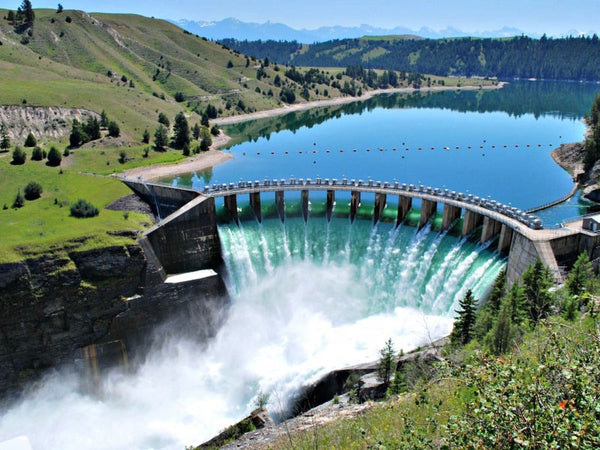
Hydropower station is the main facility in hydropower utilization. A hydropower station is usually composed of three parts: a dam, a reservoir, and a power plant equipped with water turbines. Dams are barrages, which are the main hydraulic structures of most large and medium-sized hydropower stations, most of which are concrete dams. In addition to achieving the purpose of generating electricity under the dam, the construction of a dam must also consider issues such as water transport from the reservoir in front of the dam, and the passage of ships and fish through the dam. Due to the completion of the barrage, the river course in front of the dam forms a reservoir, which concentrates the drop of the upstream flowing water and forms a Pinghu that can regulate the flow.
Picture: Water Turbine
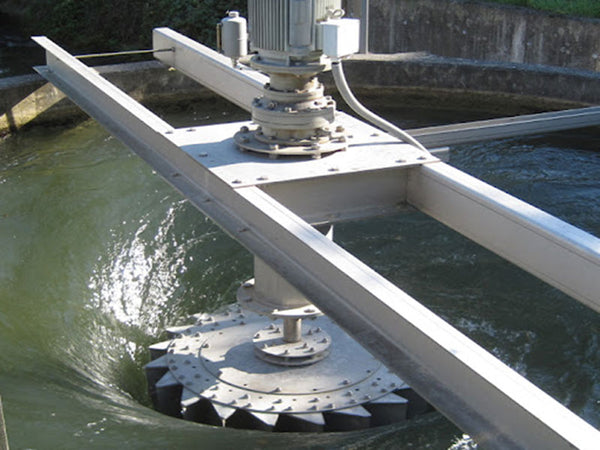
The main facility of a hydroelectric power plant is a hydraulic turbine, which is used to drive a generator to generate electricity and form a generator set. There are many forms of water turbines, which are suitable for the selection of different water levels and different flow rates. The scale of a hydropower station is expressed in terms of the installed capacity of the power plant, which is the sum of the rated power of all units in the power plant. Because hydropower stations cannot only consider power generation without considering the comprehensive use of water resources, coupled with the impact of the low water period, they cannot operate at full capacity all year round. There is a parameter for normal operation called the design guarantee rate, which is generally above 80%. For regional power grids with a greater proportion of hydropower, the design guarantee rate must be higher, otherwise the power supply guarantee of the power grid will be affected. There is also a parameter called the multi-year average power generation. Divide it by the installed capacity to know the number of hours equivalent to the full-load operation of the power station, which reflects the degree of utilization of the power station equipment.
| Tips: Regulating function of reservoir Due to the characteristics of various water-using departments, there are different requirements for the development and utilization of water resources. For example, hydropower, farmland irrigation, flood control, and fishery all need to concentrate water bodies and build reservoirs. Once a reservoir is built, how to use water resources must consider the needs of various aspects, and the construction of a reservoir as a hydropower station is no exception. In addition to power generation, other regulation functions of the reservoir must also be taken into account, mainly flood regulation and runoff regulation. Flood regulation is to reduce flood peaks. When a flood occurs in the upstream of a hydropower station, the flood is discharged downstream through the flood discharge facility, which not only ensures the safety of reservoirs and hydropower stations, but also enables the discharge of floodwater not to exceed the safe flow of downstream rivers, and protects the safety of downstream towns, industrial and mining enterprises, and farmland. Hydropower stations with flood regulation tasks must have adequate flood regulation storage capacity and matching flood discharge facilities. For example, the Three Gorges Hydropower Project on the Yangtze River is not only the largest hydropower station in the world, with a total installed capacity of 18.2 million kilowatts, but also the world Water conservancy projects with the most significant flood control benefits can effectively control floods in the upper reaches of the Yangtze River and enhance flood resistance in the middle and lower reaches. Runoff regulation refers to regulation for the purposes of power generation, irrigation, and water supply. It is an important aspect of water resource utilization. It uses reservoirs to concentrate water bodies and redistribute them in time to meet the needs of various water sectors in the national economy. |
Where is the right place to build a hydropower station? Most hydropower stations use the hydropower of the river's drop to generate electricity. Of course, hydropower stations are located next to the river and are located in areas with large river drop, such as canyons. Some rivers are very long, and the gap between the upstream and downstream is very large, often hundreds or even more than a kilometer. It is impossible to concentrate all the gaps on a large hydropower station. If you can develop several cascade power stations in stages, you must have a plan. The overall benefits can only be exerted in the selection of sites. The middle and lower reaches of the river are often sections with small drops. Can a hydropower station be built? It is also possible that these river sections tend to have ample flow. Large-diameter, low-speed hydraulic turbines are used to use low-level and large-flow water currents to still be able to generate electricity. A low water level is like a person with little strength, but many of these people are like a large flow, and they can also work together to push large objects. For example, the Gezhouba Hydropower Station in Hubei Province has a large installed capacity. The steep mountainous area in the upper reaches of the river contains abundant hydropower resources, and this is where small hydropower can be used. Small hydropower refers to small hydropower stations with an installed capacity of less than 250,000 kilowatts, which are located almost all over the country. Small hydropower projects are simple, and in places where reservoirs cannot be built, the "diversion type" method can also be used, that is, the construction of water diversion channels to divert water and concentrate power generation. Small hydropower is mostly built in mountainous areas. Being close to rural users in mountainous areas can promote the development of township industries, activate the rural economy, and integrate with local flood control, irrigation, and water supply. The masses and local governments have the enthusiasm to build power stations. By the end of the last century, the national installed capacity of small hydropower had exceeded 26 million kilowatts, accounting for one third of the 75 million kilowatts of small hydropower that could be developed, and there is still great potential.
In addition to obtaining electricity, the construction of hydropower stations has the functions of flood control and runoff regulation, as well as the functions of power grid peak regulation and energy storage. Most of the electricity users are in the daytime. During the day, it is the peak of electricity consumption. At night, the electricity consumption is less, and there is a "trough" in electricity consumption. However, most of the electricity on the power grid comes from thermal power plants. It must operate stably and cannot be switched on and off repeatedly during the day and night. Therefore, the power grid often has a surplus of power at night and the power supply exceeds demand during the day. It is also very detrimental to the safety of the power grid. It is easy, just to be able to play the role of power grid peak shaving: generate more power during the day and less power at night, and even build a special hydropower station, use the excess power of the power grid at night to pump water from low places to high places, and wait until the power system needs power. Use water from high places to generate electricity on the grid. This is a pumped-storage power station. This kind of hydropower station does not require the hydraulic power of a natural river, as long as two lakes with high and low water levels are set up at suitable locations, and the two lakes are communicated by pipelines, and the water turbine plant building is in the middle. The water turbine of this kind of power plant can be selected as a reversible unit, which can be used as a water turbine to generate electricity and as a pump to pump water. Energy storage power station is not a myth, it is already a widely used fact, and it is very important to the power industry. China has built more than 10 pumped storage power stations, and they are still developing vigorously. Energy storage power stations are particularly suitable to be built in places close to large power plants and power load centers. For example, Guangdong Pumped Storage Power Station is relatively close to Daya Bay Nuclear Power Station and close to the power load center of Guangzhou City. The benefits of energy storage and power generation are better, and it is better for grid adjustment. Peaks are more effective.
3 Protect the water tower and green reservoir
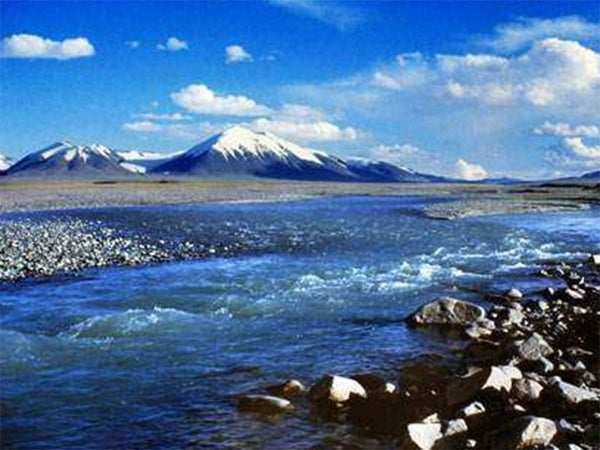
To make water resources stable and effective, the water source of the river must be protected. The water in high places is like the water on a water tower. The source of the river is in the highlands and mountains, and they are all such "water towers". The mountains in the alpine region are covered with snow and ice all year round, slowly melting into water, which flows into the river together with rain. These plateaus and mountains are even giant "water towers". For example, the northern foot of the Bayan Har Mountains in Qinghai Province is the source of the Yellow River, with an altitude of up to 5,000 meters. It is known as the "Chinese Water Tower" and is the source of the cradle of Chinese civilization. To protect the water source, water towers alone are not enough. The water in the towers will drain away. It will waste resources and cause flood disasters. Reservoir adjustments are also required to make the water flowing from the towers flow. This kind of "reservoir" is not what an artificially constructed reservoir can do, but vegetation, called a "green reservoir", which is a natural ecological layer formed by plants in forests, shrubs, meadows, and swamps. Vegetation is like a quilt covering the mountains. It has the functions of maintaining water and soil and conserving water sources. It can block mountain torrents and turn large waters into long streams. If there are good vegetation in the source area of the river, the "water tower" is also a green reservoir." Maybe this is too abstract, but it is true. The Yellow River is a symbol of the civilization of the Chinese nation in history and is known as the mother of the Chinese nation It flows through the Loess Plateau and is known for its large sand content. There have been countless floods in history, but the water volume is still abundant. By the 1980s, the water volume began to decrease. From 1979 to 2000, the Yellow River was at its source. In Maduo County, Qinghai Province, there were 6 times of current dry-off, and the longest dry-off time was 122 days in 2000. The main reason for the dry-off was the serious damage to the ecological environment of the source area, of which excessive overgrazing caused the greatest impact. For example, Maduo County, located in the source of the Yellow River in the source of the Three Rivers, has the best pasture in China. The local government took increasing the number of livestock as the main goal of developing animal husbandry, making the county once the richest county in the country in the 1980s. But rely on Overgrazing is the number one winner, and it can't be sustained after only a few years. The ecological environment there has undergone tremendous changes: lakes and ponds have dried up, land has become desertified, residents have become a problem with drinking water, vegetation is sparse, and vision is open. Rats become rampant and eat up the grass roots. The per capita stock of livestock has dropped from 110 to 20, and they have to be rented out for farming. Many people have become ecological refugees. The county is on the national list of poverty-stricken counties. The example of Maduo County shows that the loss With the "green reservoir", the water in the "water tower" can no longer be retained. Rivers sometimes flood and sometimes dry up is inevitable. Not only the Yellow River, but other large and small rivers will have a similar fate. Now Qinghai, the source area of the Yellow River, will have a similar fate. The province is drawing lessons from the construction of the Sanjiangyuan Natural Environmental Protection Zone, the establishment of no man’s land, and the implementation of ecological migration in order to restore the ability to conserve water and soil and conserve water sources. The state has also allocated huge funds to support them. These experiences are worthy of other river source protection areas. Borrowed.
















